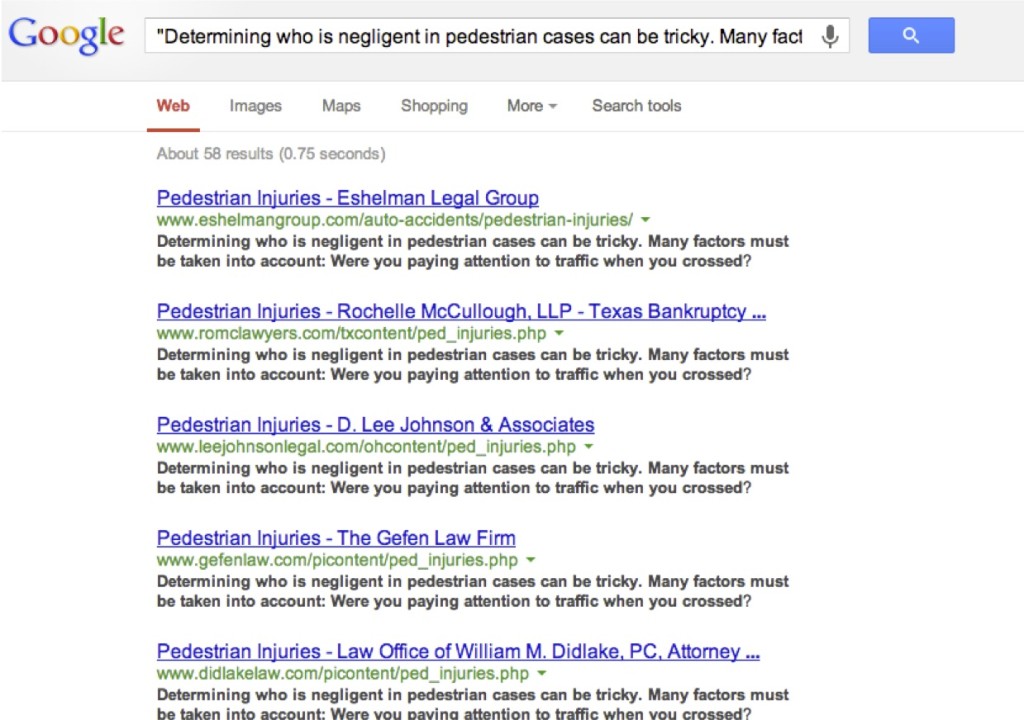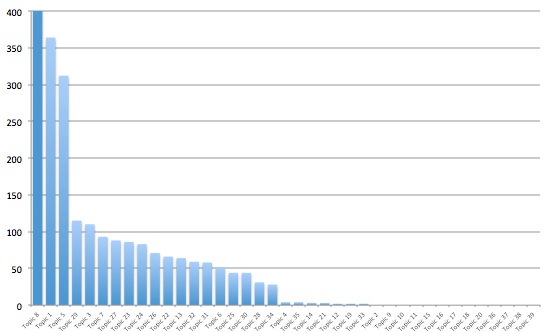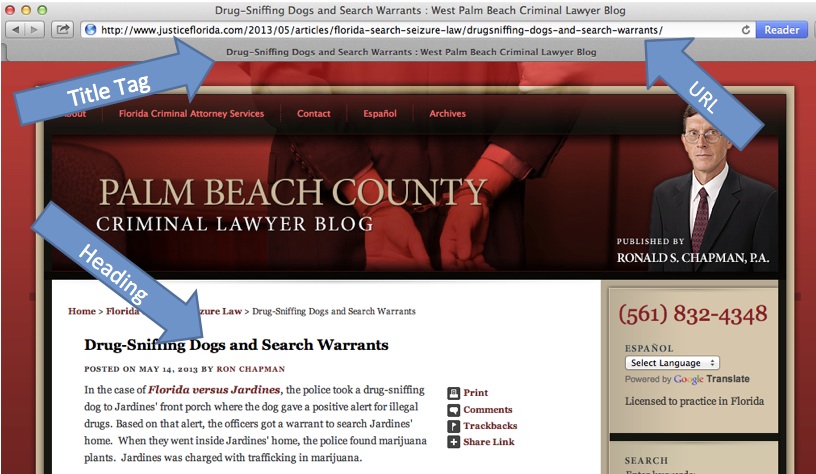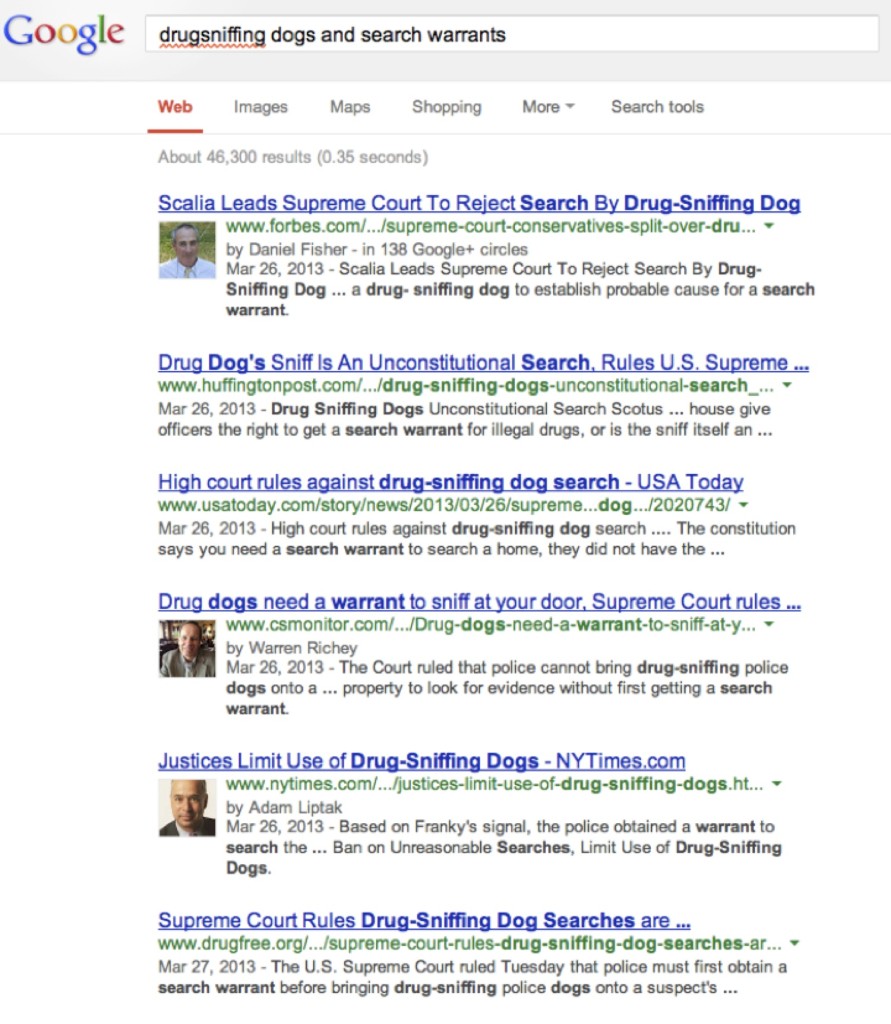Not long ago I wrote a Search Engine Land post about a law firm suing their SEO for bad results . . . today bring us Yelp going after a law firm for posting fake reviews. Having run marketing Avvo for about 5 years, I’ve seen all sorts of fake reviews (Avvo had, and I assume still has) a very strong algorithmic and human review spam process. Yelp clearly has dealt with bogus reviews in the past without reaching for their lawyers. I thought I’d dig in to see why they changed course this time . . .
Yelp goes after McMillan Group
San Diego based, McMillan Group previously won a small claims suit against Yelp for a whopping total of $2,700. The charge? That Yelp required an advertising contract in order for positive reviews to show up prominently on the company’s Yelp page. Yelp is now coming back after the McMillan Group – citing a massive astroturfing (self-authored flattering reviews) campaign. Essentially, Yelp claims the firm’s employees created new Yelp accounts for the sole purpose of writing one-off gushing 5 star reviews. Many of the reviews track back to the same IP address, which coincidentally was also the firm’s IP address, (hmmmmm – not so smart McMillan Marketing staff). In some cases “unique” reviews were posted one after another and included exactly the same text.
Yelp has clearly dealt with bogus reviews in the past – there a few possible interpretations about why this review spat has been taken to this level:
- Yelp is bullying McMillan for the original lawsuit.
- Yelp is taking aggressive steps to protect the quality of their reviews.
- Yelp is seeking a PR counterpoint story to the “advertise with us or else. . . . ” news story that can’t seem to go away.
- The Yelp marketing department hates that McMillan has put the Yelp logo linking to a “Learn how we beat Yelp for their advertising practices” page on the Mcmillan.com homepage.
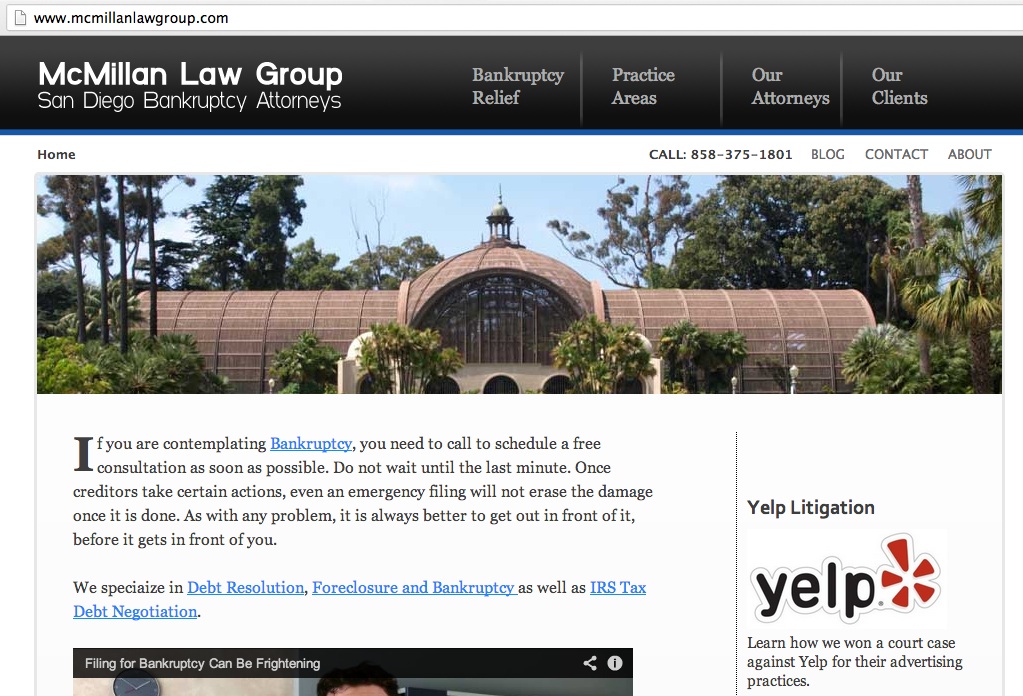
Oh yes, and there’s Yelp again on a McMillan microsite (although it seems they haven’t been able to entirely figure out WordPress):
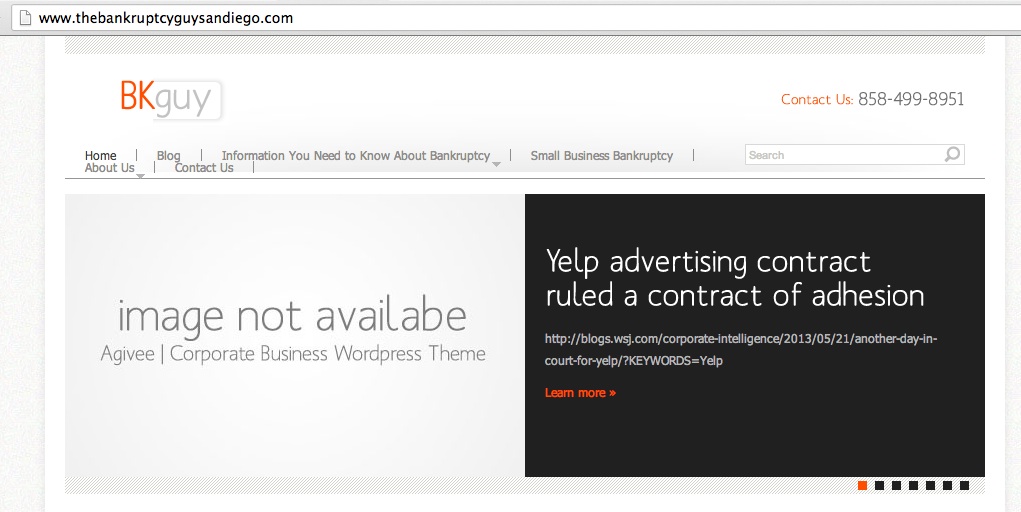
Interestingly, I saw nothing but glowing 5 stars from 23 people on Google (although there was only 1 review on Avvo).
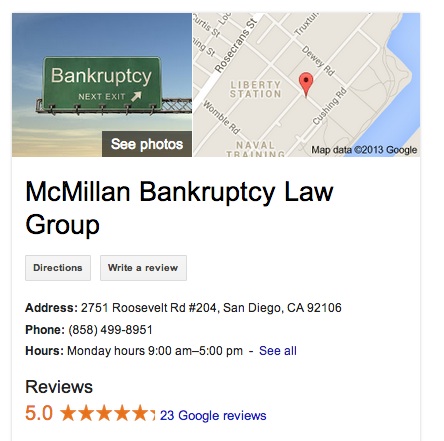
Have some time and want to dig into the legal ramifications? Here’s the complaint.
If I had to guess, I’d say this is a marketing tit for tat gone legal. All of this begs a very interesting question . . . other than the negative publicity, does this matter? Do people turn to Yelp when hiring an attorney?
Update: Backlink Review
What would the backlink profile look like for a firm willing to astroturf reviews? I took a cursory review at McMillan’s backlink profile. Consider this a cautionary tale about how NOT to engage in linkspam. According to open site explorer there are a 3,000 links from a whopping 2,000 different domains pointing to McMillan’s site. Of those, the vast majority are evenly spread across anchor text with some variation of “san diego” + “bankruptcy attorney” . . . 240 links with “san diego bankruptcy lawyers”, 240 links with “san diego bankruptcy attorneys”, 278 with “san diego bankruptcy lawyer” etc.
Now lets look at some of those links.
Spammy link tactic #1
Building single page “websites” on free website domains. I counted 13 subdomains with links for McMillan on Weebly. There are more linking subdomains on .beep, .webnode and others.
Spammy link tactic #2
Low quality directory submissions. Here’s one of my favorites – a German website Webkatalog Firmen Anzeigenmarkt with this description of McMillan:
“It is required to have a lawyer Unless you have the time, patients, and understanding of the law to do it yourself. Here is why you need a Bankruptcy Law Firm San Diego. Better-quality San Diego bankruptcy law firm will advise you full fiscal session Facilitate and you build up a plan whichwill Certainly get the creditors off your back once and for ave McMillan Law Group will therefore take attention for all the paperwork and legal procedures Which are Merely too much to manage on your own.”
Spammy link tactic #3
Comment spam on subject-matter irrelevant blogs that don’t have no-follow attributes on comments. According to OSE, somewhere hidden among the 7,137 other comments on this page on Dr.Dyslexia.com is a link to McMillan.
Spammy link tactic #4
For a localized business, a reasonable proportion of links should be local – very few should be international on foreign language sites. This is a very obvious and easy red flag to ID. For McMillan, I found links on sites in Spanish, Chinese, German and more.
The Lesson Here
This post might sound a little mean spirited, but consider it a great example to NOT emulate with regards to link acquisition. The real reason: despite all that keyword rich anchor text, a Google search for “san diego bankruptcy attorney” didn’t return McMillan until deep into page 2 and they were nowhere to be found in the local (mapped) results either.
The irony, of course, is with all of this Yelp publicity, McMillan is going to build a slew of genuinely high quality links; unfortunately they’ll all be going to a domain that is probably unsalvageable.
